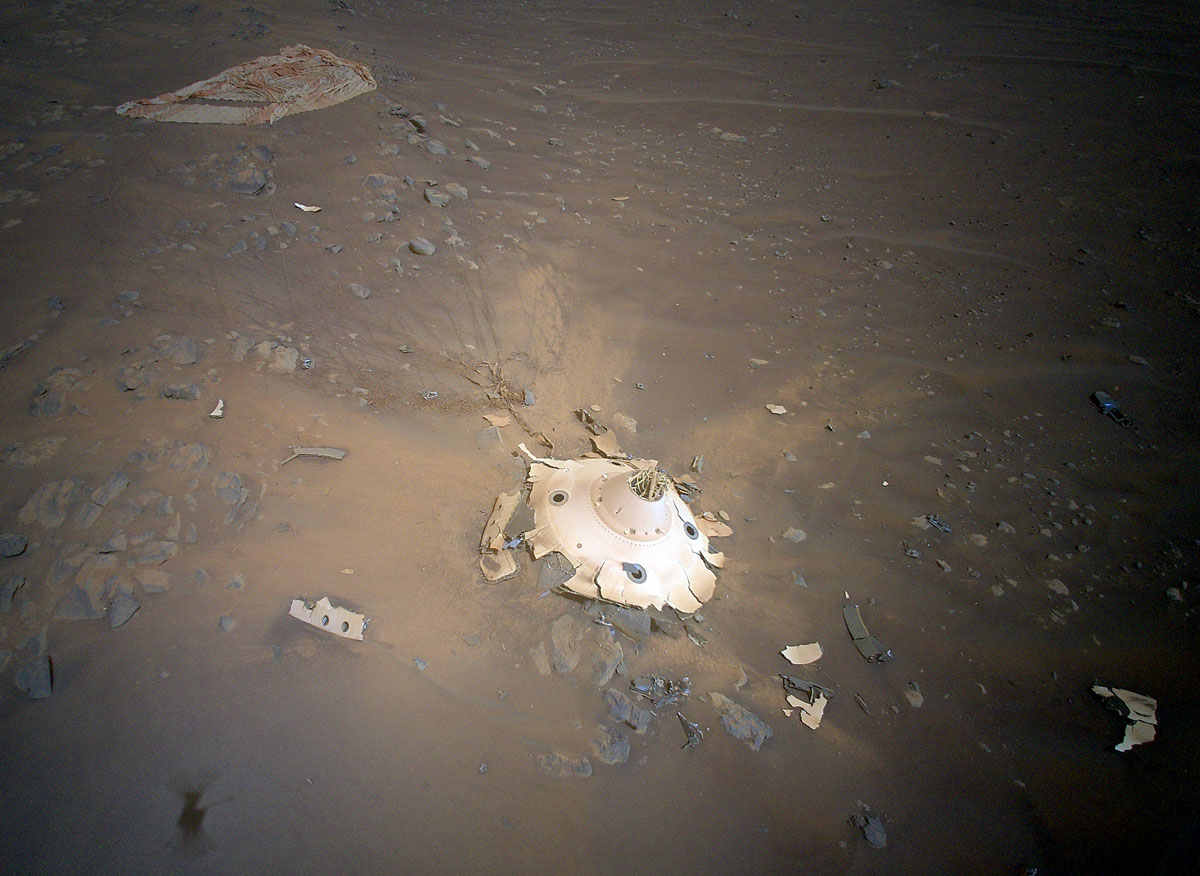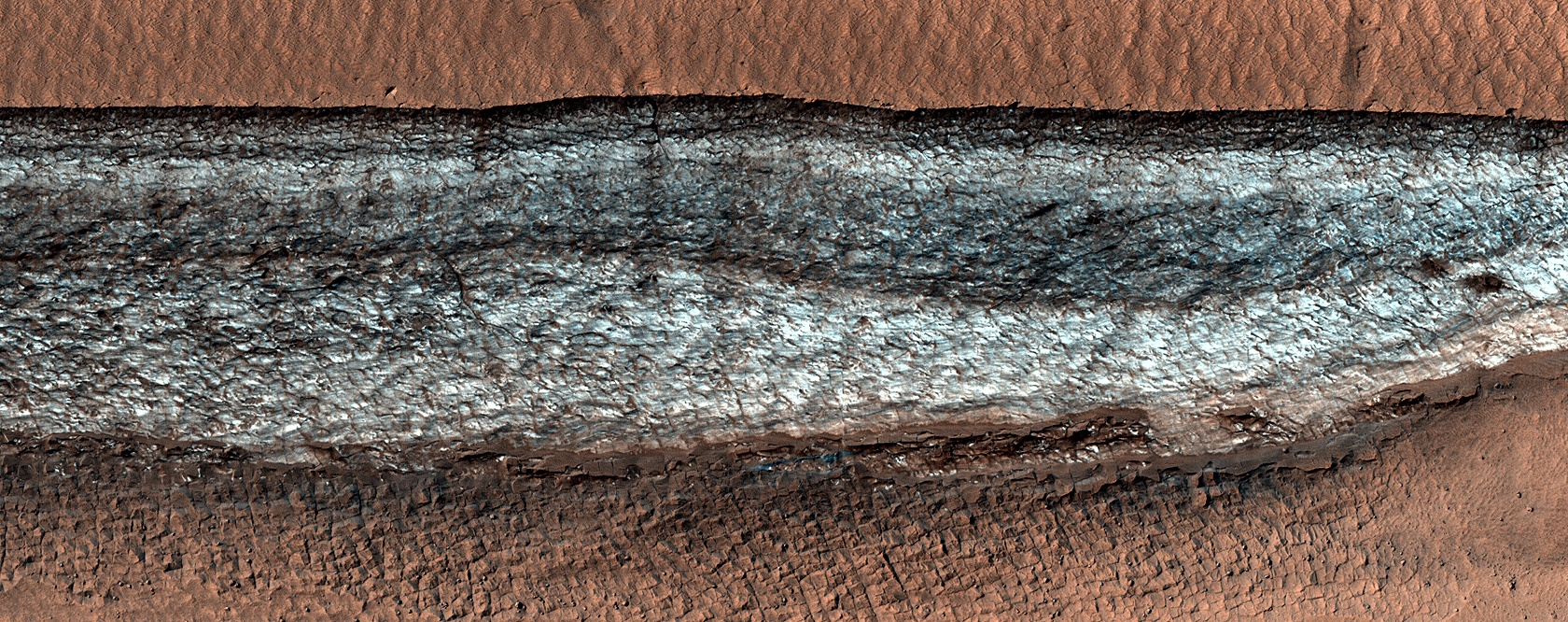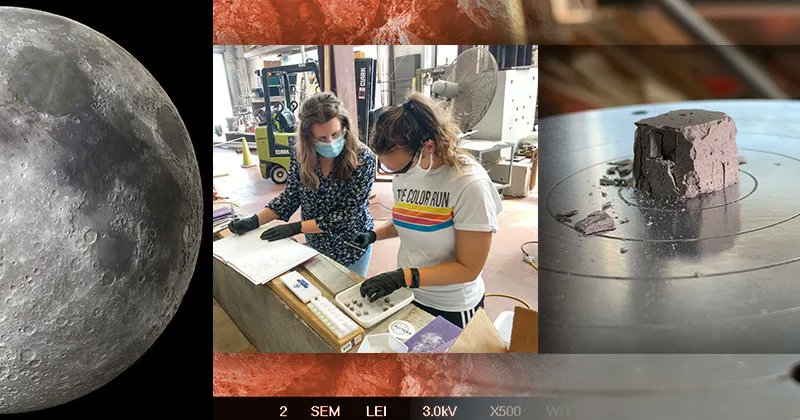A recent blog by Dr. Justin Maki, Imaging Scientist and the Deputy Principal Investigator on the Perseverance rover Mastcam-Z camera, provides a detailed account about the debris the entry, descent, and landing (EDL) system left scattered around the Martian surface while delivering the Perseverance rover to Jezero Crater. This blog highlights how much hardware goes into sending our brave, robotic explorers to the Red Planet while discussing the importance of imaging such debris.
Continue reading “NASA Gives a Detailed Analysis of all the Landing Debris Perseverance Has Found on Mars”The Geology at Jezero Crater is Even More Complex Than Scientists Were Expecting

On February 18th, 2021, the Perseverance rover landed in the Jezero Crater on Mars. Since then, Perseverance has been exploring the region in search for evidence of past (and possibly present) life – much like its cousin, the Curiosity rover. This includes obtaining samples that will be placed in a cache and retrieved by a future ESA/NASA sample-return mission. These will be the first directly-retrieved samples of Martian rock and soil that will be analyzed in a laboratory on Earth, which are expected to reveal some tantalizing bits about the history of the Red Planet.
But it appears that we don’t need to wait on the sample-return mission since the Perseverance rover is already sending some surprising data back to Earth. According to a new study by a research team led by the University of California at Los Angeles (UCLA) and the University of Oslo, Perseverance’s ground-penetrating radar detected that the rock layers beneath the crater are strangely inclined. These strange sections could have resulted from lava flows that slowly cooled or could be sedimentary deposits from an underground lake.
Continue reading “The Geology at Jezero Crater is Even More Complex Than Scientists Were Expecting”New Perseverance Rock Samples Were Altered by Water. They'll be Coming Back to Earth in the Sample Return Mission

The Perseverance rover is enjoying a bit of a winning streak lately! For the past year and a half, the rover has been exploring the Jezero crater on Mars to learn more about the planet’s past. As part of this mission, Perseverance is obtaining samples of Martian rock and soil that it will set aside in a cache for future retrieval. As part of a NASA/ESA sample-return mission, these will be returned to Earth for analysis and could contain evidence of past life. Thanks to the international team of geologists and astrobiologists overseeing the collection process, the first of these rock samples have been obtained!
Continue reading “New Perseverance Rock Samples Were Altered by Water. They'll be Coming Back to Earth in the Sample Return Mission”This Ice Cliff is One of the Few Places With Exposed Water ice in the Mid-Latitudes on Mars. It’s Probably Tens of Millions of Years old
Because of the orbiters and landers that have studied Mars over the years, scientists have learned that water ice is very likely locked away just under the surface throughout the planet’s mid-latitudes. These regions – especially in the northern hemisphere — are mostly covered with smooth material and scientists suspect ice is just underneath.
But sometimes, images like this give one from the HiRISE (High Resolution Imaging Science Experiment) camera on the Mars Reconnaissance Orbiter, provides a glimpse of the ice that might be buried below the surface. This image shows a cliff jutting out of the normally smooth terrain, and the cliff is covered with bright ice.
Continue reading “This Ice Cliff is One of the Few Places With Exposed Water ice in the Mid-Latitudes on Mars. It’s Probably Tens of Millions of Years old”Want to Live on Mars? Here's Where the Water is
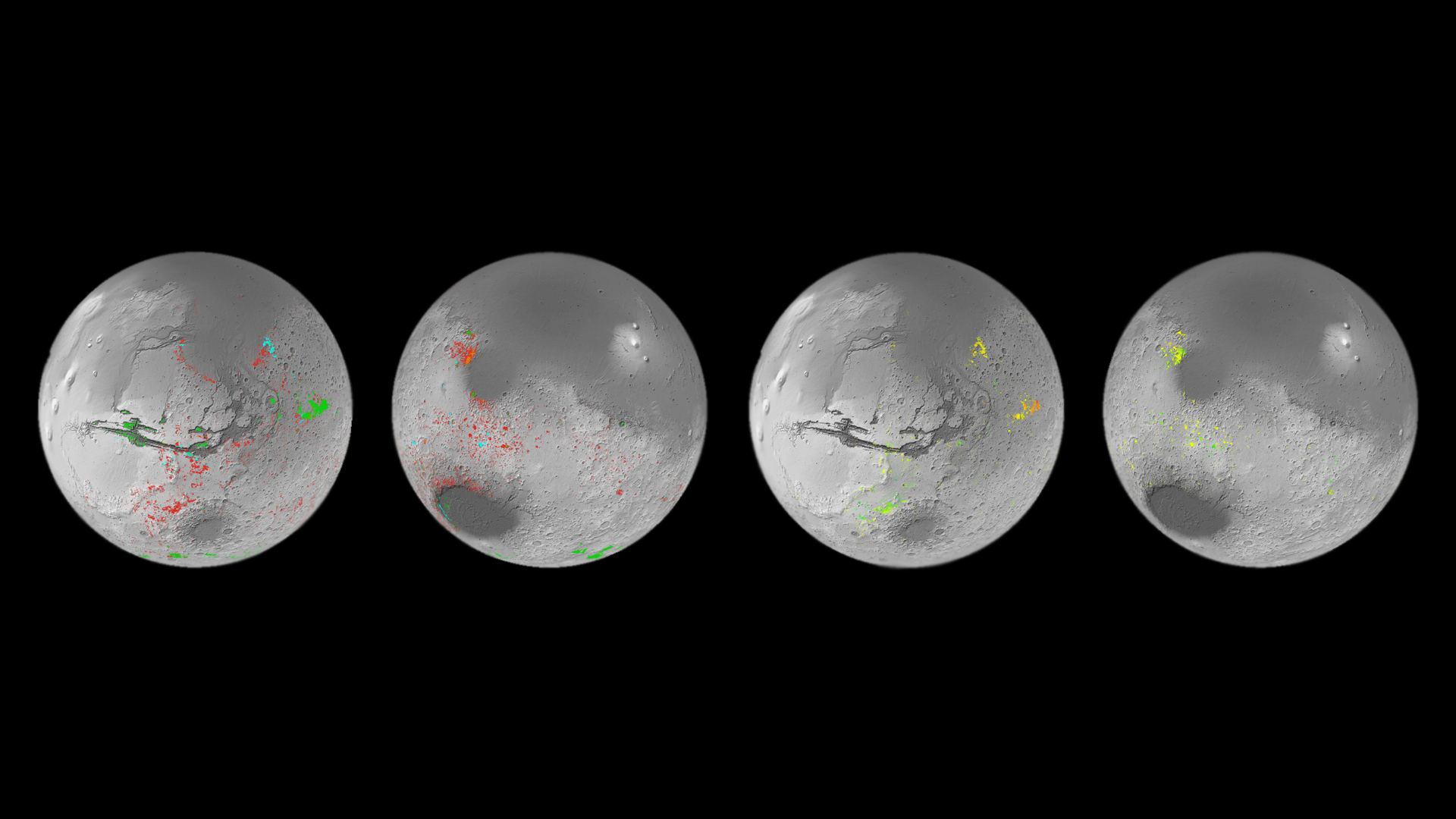
When crewed missions begin to travel to Mars for the first time, they will need to be as self-sufficient as possible. Even when Mars and Earth are at the closest points in their orbits to each other every 26 months (known as “Opposition“), it can take six to nine months for a spacecraft to travel there. This makes resupply missions painfully impractical and means astronauts must pack plenty of supplies for the journey. They will also need to grow some of their food and leverage local resources to meet their needs, a process known as In-Situ Resource Utilization (ISRU).
In particular, astronauts will need to know where to find water on the Red Planet, which is no small challenge. Luckily, the European Space Agency (ESA) has created a mineral map showing the locations of aqueous minerals (rocks that have been chemically altered by water). This map was created by the Mars Orbital Catalog of Aqueous Alteration Signatures (MOCAAS) project and took over ten years to complete. When it comes time to select landing sites for crewed missions to Mars (in the next decade and beyond), maps like this will come in mighty handy!
Continue reading “Want to Live on Mars? Here's Where the Water is”How Weak Will Astronauts Feel When They First set Foot on Mars After Months in Space?
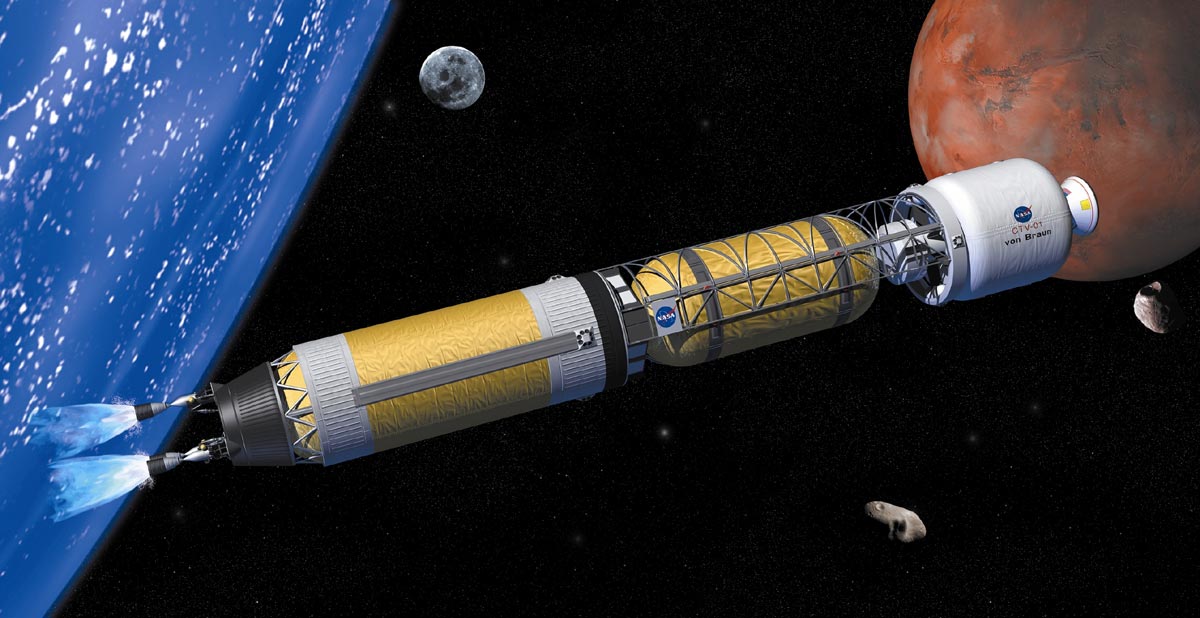
In the coming decade, in 2033, NASA and China intend to send astronauts to Mars for the first time in history. This presents numerous challenges, ranging from logistical and technical issues to ensuring that astronauts can deal with waste and have enough food and water for the months-long transit to and from Mars. But of course, there’s also the health and safety of the astronauts, who will be spending months traveling through space where they’ll be exposed to cosmic radiation and microgravity. There are even concerns that after months of exposure to microgravity, astronauts will have trouble adapting to Martian gravity.
To determine if these fears have merit, a team of space medicine experts from the Australian National University (ANU) developed a mathematical model to predict whether astronauts can safely travel to Mars and perform their duties once they arrive on the Red Planet. This model could be immensely valuable alongside all the other preparations that need to happen before astronauts set foot on Mars. It could also be used to assess the impact of short- and long-duration missions that take astronauts far beyond Low Earth Orbit (LEO) and the Earth-Moon system in the future.
Continue reading “How Weak Will Astronauts Feel When They First set Foot on Mars After Months in Space?”Were Phobos and Deimos Once a Single Martian Moon That Split up? Not Likely, says New Study

The origin of Phobos and Deimos, the two Martian moons, has been a mystery to astronomers. These two bodies are a fraction of the size and mass of the Moon, measuring just 22.7 km (14 mi) and 12.6 km (7.83 mi) in diameter. Both have a rapid orbital period, taking just 7 hours, 39 minutes, and 12 seconds (Phobos) and 30 hours, 18 minutes, and 43 seconds (Deimos) to complete an orbit around Mars. Both are also irregular in shape, leading many to speculate that they were once asteroids that got kicked out of the Main Belt and were captured by Mars’ gravity.
There’s also the theory that Phobos and Deimos were once a single moon hit by a massive object, causing it to split up (aka. the “splitting hypothesis”). In a recent paper, an international team of scientists led by the Institute of Space and Astronautical Science (ISAS) revisited this hypothesis. They determined that a single moon in a synchronous orbit would not have produced two satellites as we see there today. Instead, they argue, the two moons would have collided before long, producing a debris ring that would have created an entirely new moon system.
Continue reading “Were Phobos and Deimos Once a Single Martian Moon That Split up? Not Likely, says New Study”Mars and Moon Dust can be Turned Into Geopolymer Cement. Good Enough for Landing Pads and Other Structures
Materials science has long taken the lead in space exploration research, and it seems to have been getting even more attention than usual lately. That is especially true for building materials. NASA has funded several new research programs to develop new building materials that can do everything from providing structure to future human habs to landing pads for future reusable rocket missions. Now that second goal is one step closer, thanks to researchers at the University of Delaware.
Continue reading “Mars and Moon Dust can be Turned Into Geopolymer Cement. Good Enough for Landing Pads and Other Structures”A new way to Make Oxygen on Mars: Using Plasma
There’s more than one way to produce oxygen on Mars. Or at least there is now. After the success of the MOXIE experiment that rode along with Perseverance to the red planet in 2021, another idea to produce one of the most useful gases in the universe has been experimentally proven by an international team of researchers. And they could potentially do it on Mars itself.
Continue reading “A new way to Make Oxygen on Mars: Using Plasma”Cyanobacteria Will be our Best Partner for Living on Mars
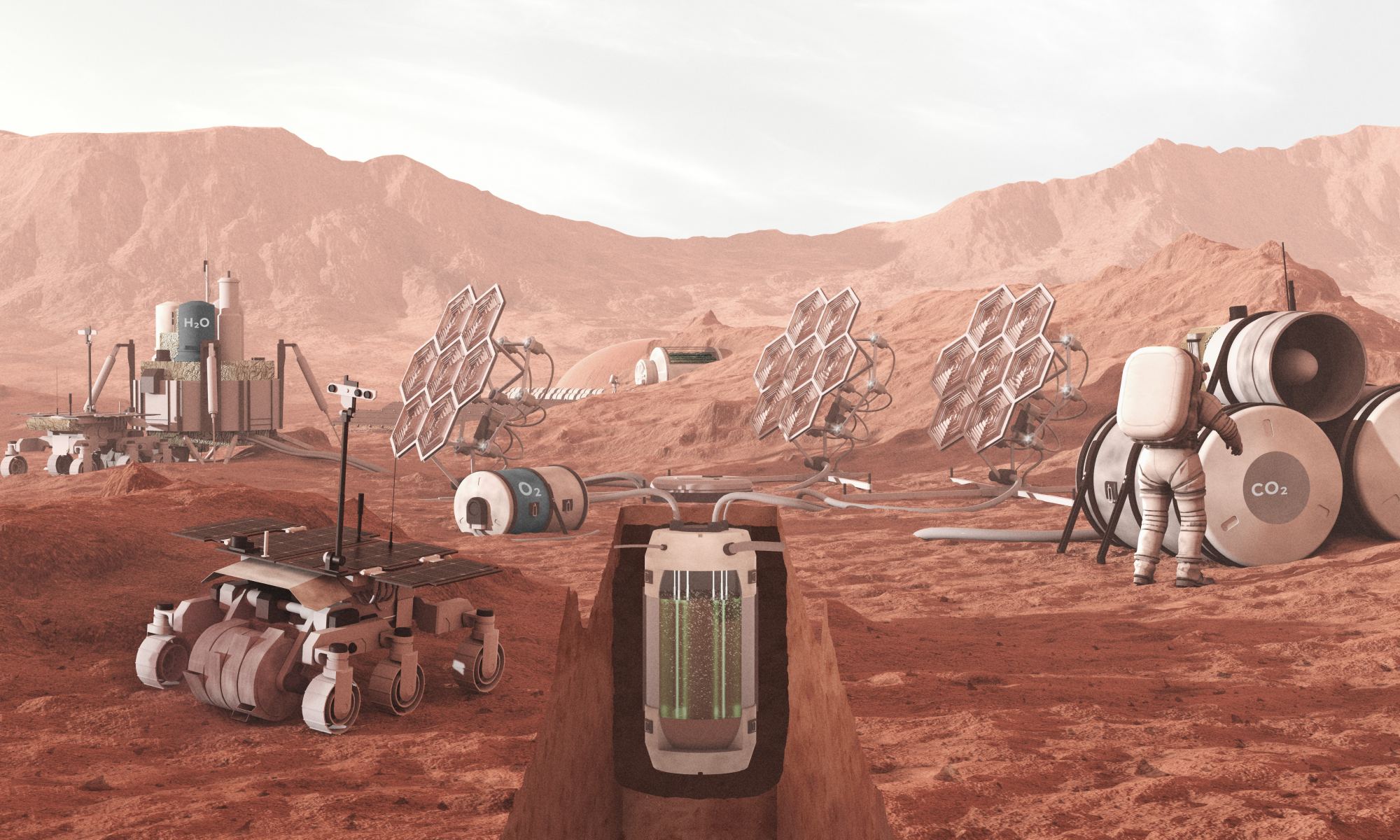
Scientists, futurists, and fans of science fiction alike have all dreamed that someday, humans would set foot on Mars. With the dozens of robotic orbiters, landers, rovers, and aerial vehicles we have sent there since the turn of the century (and the crewed missions that will follow in the next decade), the prospect that humans might settle on the Red Planet is once again a popular idea. Granted, the challenges of getting people there are monumental, to say nothing of the challenges (and hazards) associated with living there.
No matter how many people are willing to make a one-way trip and commit to living on Mars, establishing an outpost of humanity there will require some serious innovation and creative thinking! According to a new study by an international research team led by the Center of Applied Space Technology and Microgravity (ZARM), cyanobacteria might be able to withstand the difficult conditions and even thrive in Martian soil. This research suggests that astronauts could create biomass on Mars that would create a biological cycle.
Continue reading “Cyanobacteria Will be our Best Partner for Living on Mars”
